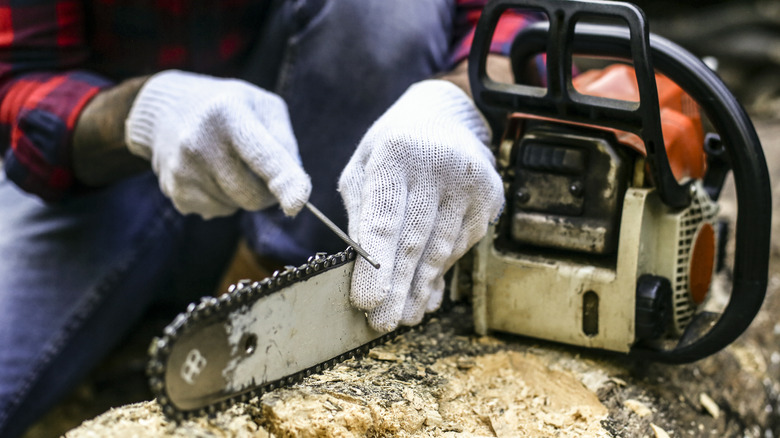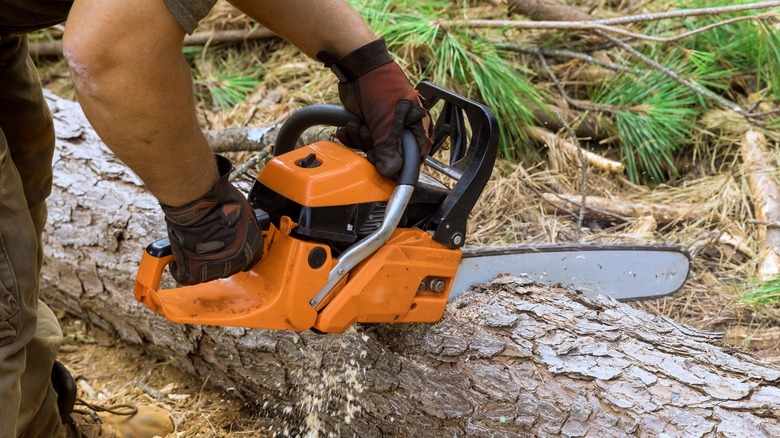The Common Chainsaw Sharpening Mistake To Avoid At All Costs
We may receive a commission on purchases made from links.
So you've been to the trouble of carefully selecting the right chainsaw, and for a few hours it has run like a dream. Then it starts to get harder and harder to use, and instead of producing nice, clean wood chips, you're getting pulp. It's a sure sign the chainsaw needs sharpening. Old hands will probably pull out a trusty round file. Those with less experience might choose a chainsaw sharpening guide like the one from Pferd, available on Amazon.
Sadly, even when the teeth look sharp, results can be disappointing. A common chainsaw sharpening mistake could be the cause. It's all about the tooth profile. Understandably, people tend to focus on the top of the tooth because that looks like it ought to do the cutting. However, the bottom (gullet) is just as important. If this isn't also filed, then the tooth's shape changes and impacts cutting efficiency.
Fortunately, the solution is straightforward. What's usually needed is more downward pressure during the sharpening motion so that the original tooth profile is maintained (or reestablished). The file only works on the forward stroke, so always push, lift back, then push again. You'll hear a grating sound as it cuts. After a couple of strokes, check the gullet. You should see bright, fresh metal there as well as on the rest of the tooth's cutting edge. If you don't, apply a little more pressure. Once you've got a feel for it, it becomes second nature.
More useful chainsaw tips
Whether you're felling great oaks or pruning trees with a mini chainsaw, proper preparation and technique make the job a lot easier. If you've never used a chainsaw before, then getting help from someone with experience is a great place to start. Proper chainsaw safety is vital, so make sure you have all the necessary gear. You can find details in your chainsaw user manual and online.
It's important that the chain tension is correct for all electric, cordless, or gas-powered chainsaw models. A loose chain might be thrown off, which is potentially dangerous. The exact process for tensioning a chainsaw varies from model to model but isn't difficult. Your manual should provide instructions. Do it every time you take your chainsaw out.
A common fault with gas chainsaws is that the motor doesn't run smoothly. It could be the carburetor, but these are relatively complex, so check filters before you tinker around. A blocked air or fuel filter can cause spark plug problems or directly affect engine performance. These items are easy to check, clean, or replace, so start with the basics. A regular maintenance routine, based on the manufacturer's suggestions, should ensure your chainsaw is a pleasure to use and will give you years of service.

